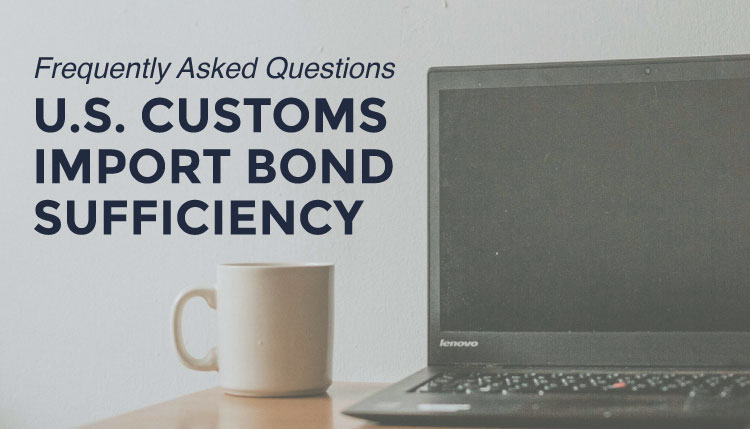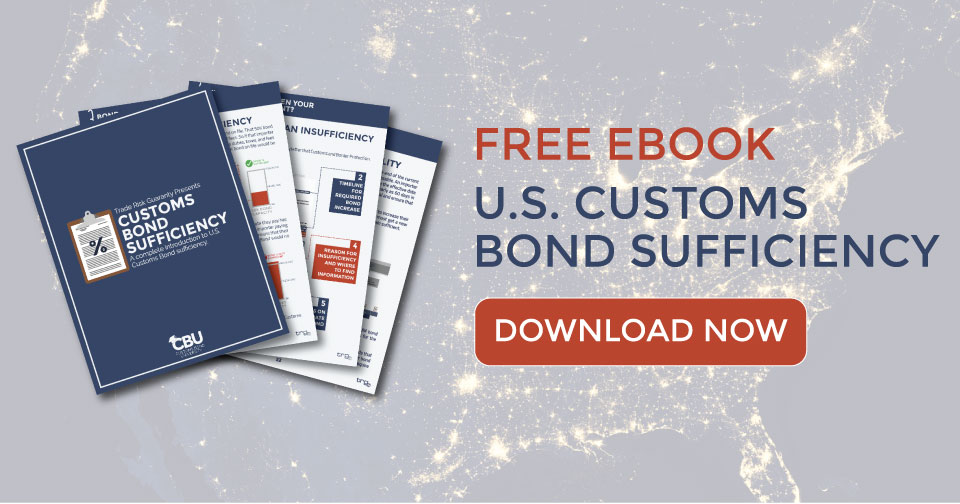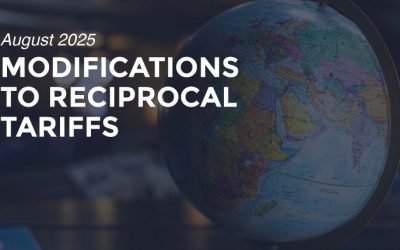Trade Risk Guaranty provides some answers to frequently asked questions about the bond sufficiency of your company’s U.S. Customs Bond.
U.S. Customs Bond Sufficiency can be a confusing topic when you don’t typically have to think about your Customs bond throughout the year. However, here at Trade Risk Guaranty, we think about U.S. Customs bonds day-in and day-out and work hard to clarify the details of this industry to businesses that import into the United States.
Answering Your Bond Sufficiency Questions
With all of the current uncertainty throughout the international trade industry, we have received questions about bond sufficiency from many importers. So to help provide some insight on the topic, we put together the following answers to the most.
How is Bond Sufficiency Calculated for a C1 U.S. Customs Bond?
The bond must be at least 10% of the total duties, taxes, and fees paid over the previous 365 days on a rolling basis. To learn more, watch our educational video covering the basics of U.S. Bond Sufficiency.
What Happens When a Bond Becomes Insufficient?
When 10% of the total duties, taxes and fees paid over the previous 365 days surpasses the bond amount, the bond must be terminated and replaced with a new, larger bond. U.S. Customs and Border Protection will consider your bond insufficient once you are either at or over 100% of the bond’s capacity.
If you do not get a larger bond in place before the due date, CBP will begin stopping your shipments at the port and you will no longer be able to import until a sufficient bond is placed.
How Long Do Importers Have to Replace the Insufficient Bond?
Typically, CBP will send a letter stating that the current bond is insufficient and must be terminated and replaced by a new, larger bond within 30 days of the letter being sent. For more details, watch our video about what happens once your Customs bond is deemed insufficient.
Does Placing a New Customs Bond Reset the Sufficiency Calculation?
No, the new bond will still contain the duties, taxes and fees paid over the previous 365 days on a rolling basis in its calculation.
Can the Current Customs Bond on File Simply Be Amended to a New, Larger Amount?
No, CBP does not allow for bonds to be amended and instead requires that the bond be terminated and replaced by a new bond.
How do I Determine the Bond Amount I Will Need When my Bond Needs to be Increased?
In order to determine the bond amount needed, you’ll need to take into account both the previous 365 days’ duties, taxes and fees, as well as the upcoming 365 days duties, taxes and fees to determine an amount that will remain above 10% of the total duties, taxes and fees paid on a rolling basis for the entire upcoming year.
If you are not familiar with the formula, learn how to calculate your U.S. Customs Bond Size in our educational video.
How Can I Monitor My Bond’s Sufficiency?
TRG exclusively has a program that we’ve developed that allows our clients to monitor their bond sufficiency in real-time, called Eagle Eye ACE. Learn more about Eagle Eye ACE and how you can get access to your data.
Where Can I Find Further Information on U.S. Customs Bond Sufficiency?
For a more extensive explanation of bond sufficiency, take a look at TRG’s Bond Sufficiency eBook.






![[Webinar] How Could Changes to De Minimis Impact Your Company?](https://traderiskguaranty.com/trgpeak/wp-content/uploads/2025/05/trg-how-de-minimis-impacts-customs-bond-webinar-400x250.png)
![[Webinar] United States Reciprocal Tariffs – The What, Why, and How](https://traderiskguaranty.com/trgpeak/wp-content/uploads/2025/04/trg-webinar-reciprocal-tariffs-400x250.png)